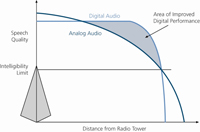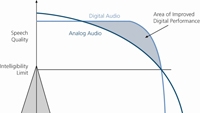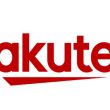Get your ducks in a row

Earlier this year, I was at a trade show in Las Vegas to give a presentation on successful land mobile radio (LMR) system migration. I had some free time, so I decided to try my hand at blackjack. Well, on my third trip to the ATM, it dawned on me that my game strategy might be flawed. I had the basic information down (how to hit and stand and the goal of getting cards to add up to 21), yet I did not quite understand all of the rules, all of my options, or where to go for expert advice.
As I returned to the table feeling less confident and more confused, my presentation topic popped into my head, and I realized how similar this feeling must be to not having a well-thought-out system migration strategy.
There are several reasons to migrate your legacy system, but before you can start, it’s important to accept that change really is inevitable. Former British Prime Minister Harold Wilson once said, “He who resists change is the architect of decay.” For your system migration to be successful, you will need to know two basic things: What your system looks like today, and what you want your system to look like tomorrow.
Much like blackjack, understanding your starting point is critical to making the right decisions for your system migration. The first step is to conduct a formal inventory of your current communications systems equipment, including portable and mobile radios with their model types and feature capabilities. For system infrastructure, create a site inventory of every piece of equipment in use, from base-station equipment to dispatch consoles. Record all of the available information, including the dates of installation, software versions, and physical quantities of equipment and users. This information will be important to track what equipment may be reusable and, therefore, help to lower migration costs.
Radio system migrations take place to increase user benefits, meet regulatory mandates or to update obsolete technology — or a combination of the three. While investing in a system migration can be a difficult decision, there is great value to the public-safety community in accepting the evolving world of communications. Benefits include additional spectrum available to first responders, increased levels of interoperability and features to make communication more efficient. These benefits can lead to a safer community because of the increased capabilities of its first responders to communicate.
In blackjack, the preferred destination — 21 — is a given, but in the world of LMR, there are many system choices for public-safety decision-makers to consider. Many users are moving from analog to digital, some from conventional to trunking, while others are migrating from proprietary to open-standards-based systems.
Analog to digital
Our technical world has become “digital,” and digital technologies are everywhere. Chances are you wake up to a digital alarm clock, you talk on a digital cell phone and, as of June 12, you watch digital television. The digital migration is taking place for good reason, as performance and features are enhanced in a digital environment. Some experts will state that coverage is reduced in a digital footprint and that analog radios will outperform digital radios in a high-noise environment. But, for most users, leaving analog behind and advancing to the digital world is a must that brings more benefits than detractions.
Wideband to narrowband
The basic goal of the narrowbanding mandate is to allow more users to use the available spectrum. On Jan. 1, 2013, the FCC will require that all systems below 512 MHz operate at 12.5 kHz efficiency. Many users today operate at 25 kHz, and the narrowband mandate means more users will operate within that fixed amount of spectrum. While many agencies have prepared their systems for this mandate, many remain unchanged. Complying with the FCC mandate sooner than later is highly recommended to avoid loss of license and incursion of FCC penalties, and to remove the risk of jeopardizing first responders’ ability to communicate. Furthermore, while there is no formal order yet to operate at a 6.25 kHz efficiency below 512 MHz, it is recommended that owners purchasing new systems investigate 6.25 kHz options or invest in systems that can easily migrate to a 6.25 kHz-efficient solution.
Conventional to trunked
With the majority of public-safety users currently operating on a conventional system, there will be many systems that get upgraded from conventional operation to trunked operation. The trunked environment enables flexible talkgroups and efficient channel use, and delivers a feature-rich system. The important key to a successful migration is preparing the users for the change in system operation. With such a dramatic shift in the inherent way the system works, the added complexity of a trunked system can leave some users preferring the legacy system. With proper training and ongoing communication, users will understand and benefit from the use of trunked radio technology.
Proprietary to standard
Migrating your system to one based on accepted technical standards provides the basis for effective interoperability and gives the power of equipment choice back to the system owner. By migrating to a standards-based system, such as those based on APCO Project 25, system owners can achieve multi-vendor operation and are no longer forced to comply with the upgrade demands of a single vendor.
Your system migration may encompass more than one of these conditions, which compounds the complexity of the change. For example, you may be migrating from an analog, wideband, conventional system to a digital, narrowband, trunked, standards-based system. Understanding the pros and cons of all the options can be tricky, and this is where the expert help becomes most valuable. Help is available for system owners looking to migrate. Much like in the game of blackjack, where you can simply request advice from the dealer, vendors and consultants are available to assess needs and provide recommendations. The experts can help collect information and evaluate risk as it relates to your project.
While system migration can be a daunting task, remember that a solid migration strategy is the key to success. Keep these steps in mind when planning your migration:
- Inventory your system so you know what you have today.
- Know what options are available to you.
- Know your desired destination.
- Use expert advice.
Following these steps will not only save you time and frustration, but will likely save you from making multiple trips to the ATM.
Todd Perdieu is a manager of system solutions engineering for Harris RF Communications Public Safety & Professional Communications Division.
MIGRATION PROS AND CONS
| Migration type | Pros | Cons |
|---|---|---|
| Analog to digital | Audio quality Feature enhancement Configuration flexibility | Coverage perception Noise filtering |
| Wideband to narrowband | Efficient use of frequencies More channels for users Equivalent voice performance | Possible reduction in coverage Reduction in data throughput |
| Conventional to trunked | Controlled system access Better channel use Enhanced system features Talkgroup user structure | More complex system User training |
| Proprietary to standards-based | Multi-vendor interoperability Customer choice | One size doesn’t fit all User needs may go beyond the standard |
Related Stories

















